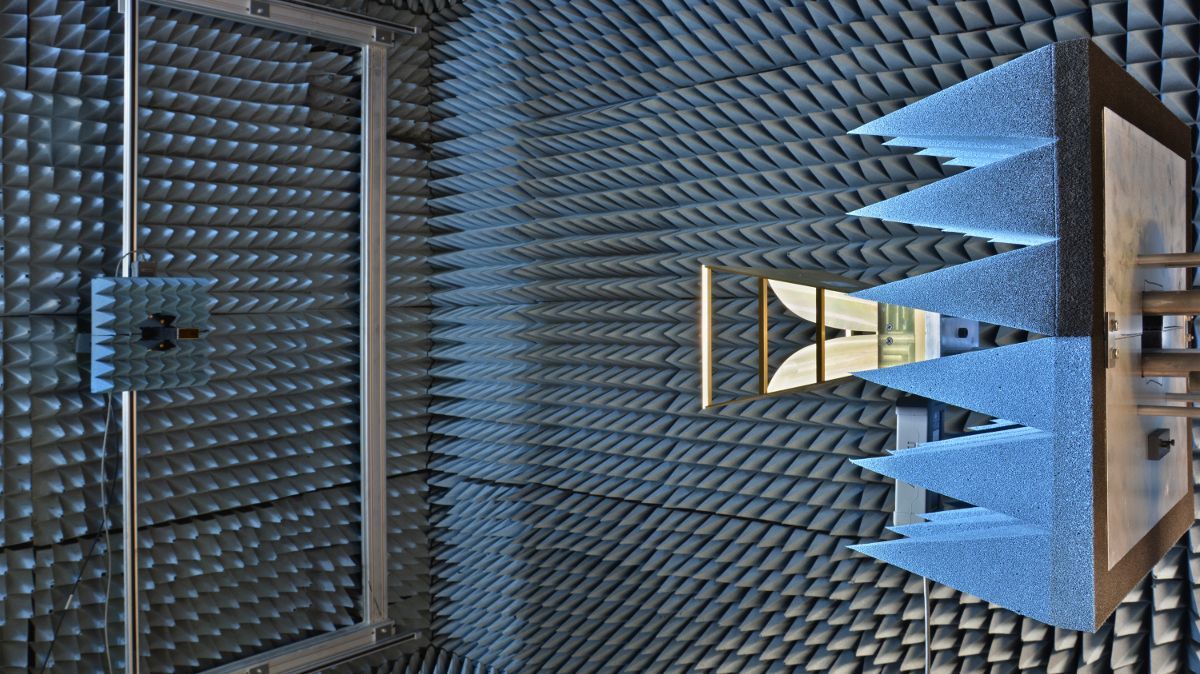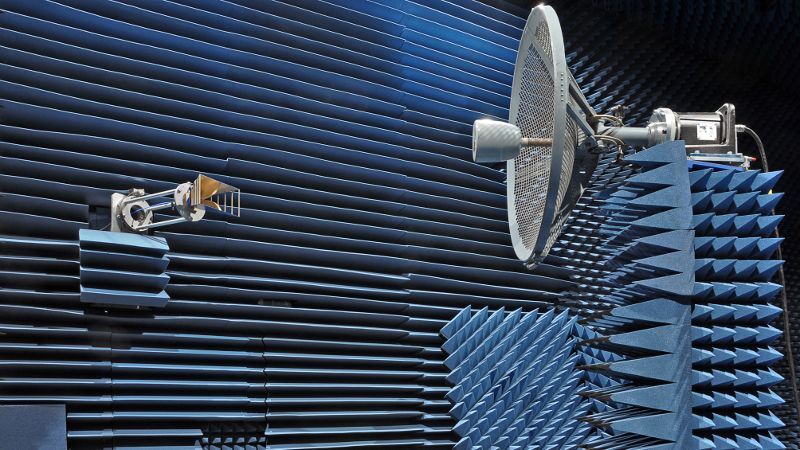Antenna Measurements
Antennas as the indispensable transducer between guided waves and free space wave propagation are a key element for every high-frequency wireless system, be it mobile communications, radar sensors, or nuclear magnetic resonance imaging. Therefore, theoretical and practical investigations of novel antenna concepts form one focus of research at IHF. Assessing the characteristics of antennas and antenna systems calls for dedicated measurement techniques inside an electromagnetically anechoic chamber allowing high precision results. Consequently, measurement techniques as such are also of central interest to our researchers.
Far-Field Measurements

Compact Antenna Test Range
Compact Antenna Test Ranges provide an efficient means of obtaining the plane wave illumination of an Antenna Under Test (AUT) over a specified test zone (“Quiet Zone”) normally provided by a long far-field range in a relatively short distance. This is achieved by conversion of the spherical wave produced by the feed antenna to a high-quality plane wave by a parabolic reflector assembly.
Near-Field Measurements
Near-field measurement systems provide an alternative to conventional far-field measurement systems for characterizing the radiation properties of an antenna. Three main system types, namely planar, cylindrical and spherical, exist. The general method is based on the Huygens principle: From the measured tangential components on a defined surface in the near-field of the antenna, the far-field is determined by numerical calculation. The near-field of the antenna further transformed to modes in the corresponding coordinate system. From the mode spectrum the different antenna parameters such as the radiation pattern can be calculated.

Planar Near-Field Measurements
In planar near-field measurements the radiated field is measured on a flat rectangular surface in front of an antenna (AUT). This geometry allows a simple and inexpensive mechanical setup. Moreover, the transformations are mathematically simple to describe and easy to implement. However, it provides the radiation pattern only in a limited range of solid angles and is therefore only suitable for antennas with high gain.

Spherical Near-Field Measurements
Spherical Near-Field ranges determine the spatial distribution of the electric field transmitted by a test antenna on a spherical surface in the near-field close to the AUT. Numerical post-processing methods employing spherical harmonics are used to transform these measurements to the far-field. The mechanical effort is greatest in the spherical geometry, but has the advantage that a closed surface around the antenna under test is measured. Thus it also provides a complete three-dimensional radiation pattern.
More flexible measurement systems for far- and near-field measurements techniques



![[Translate to English:] [Translate to English:]](/fileadmin/_processed_/8/5/csm_RoadmapAnnouncement_f6994f9608.jpeg)

